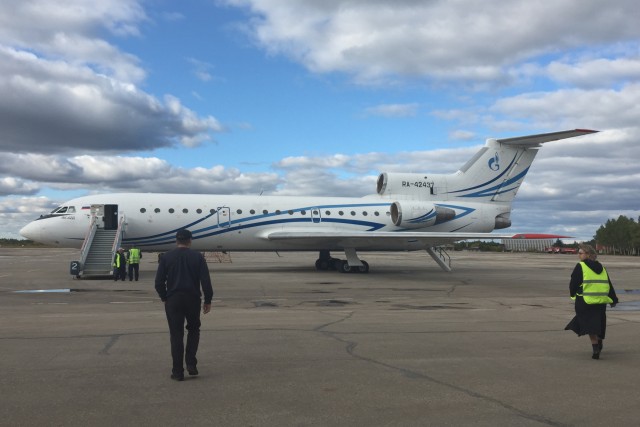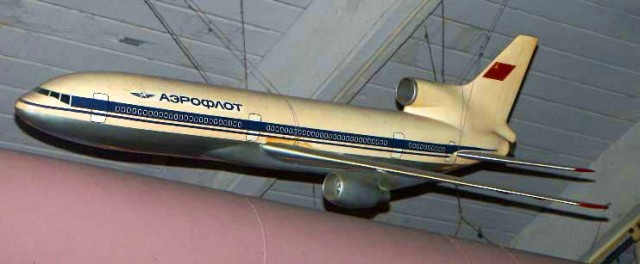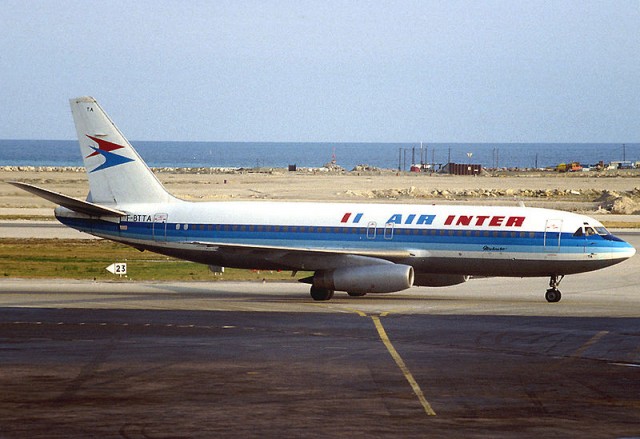
A Gazprom Yak-42D – Photo: Bernie Leighton | AirlineReporter
Many people used to call Southwest Airlines an “oil company with wings.” Well, what if you could find an oil company that ran an airline on the side? I did.
Gazprom is the world’s largest extractor of natural gas. Not only that, they have also extracted tens of millions of barrels of crude oil. They are one of the largest companies in Russia. One interesting thing is that around 2,800 of Gazprom’s 393,000 employees work in their aviation division.
Is this a private employee shuttle? Not always. At first glance, one would assume their fleet of Superjets, Yak-42Ds, Tu-154Ms, and even 737-700s (as well as over one hundred helicopters) ply the vast Siberian and Arctic skies from oilfield to oilfield. Nope — they also provide scheduled passenger service. One would think this would be an easy way to catch a ride on a Yakovlev Yak-42 . This is Russia; there’s always a catch!

I bet most people thought this was a joke! Photo: Chris Sloan | Airchive.com
The 1970s were a time of economic malaise for the west. Weirdly, the Soviet Union was chugging along at its own egregious and bizarre pace, and Soviet air travel needs had never been more pressing. Millions of Warsaw Pact and Soviet citizens needed to shuttle around the Iron living room. In fact, Aeroflot celebrated its hundred-millionth-passenger year in 1976. This called for larger aircraft. Engine technology issues were holding up Ilyushin’s domestic design, which we now know as the mostly-extinct IL-86.
The program to which the IL-86 stemmed from was formally known as the “aerobus”. The IL-86 was not supposed to be the only aircraft of the family of short, medium, and long-haul indigenous widebody aircraft.

Believe it or not, Tupolev almost built a similar aircraft (but widebody) to the Dassault Mercure. Photo: Alain Durand
Tupolev had stepped up to offer the Tu-184, an aircraft that was similar to a twin-aisle Dassault Mercure. Thankfully, at the time of its inception Andre Tupolev was still alive. He took one look at it and decided that the company should not waste any resources on what he was sure would be nothing but a reputation-wrecking disaster. Not that Tupolev was immune to civil aviation failures, they are simply beyond the scope of this article. They were also, usually, swept under the rug and blamed on Myashischev (a competing design bureau).


